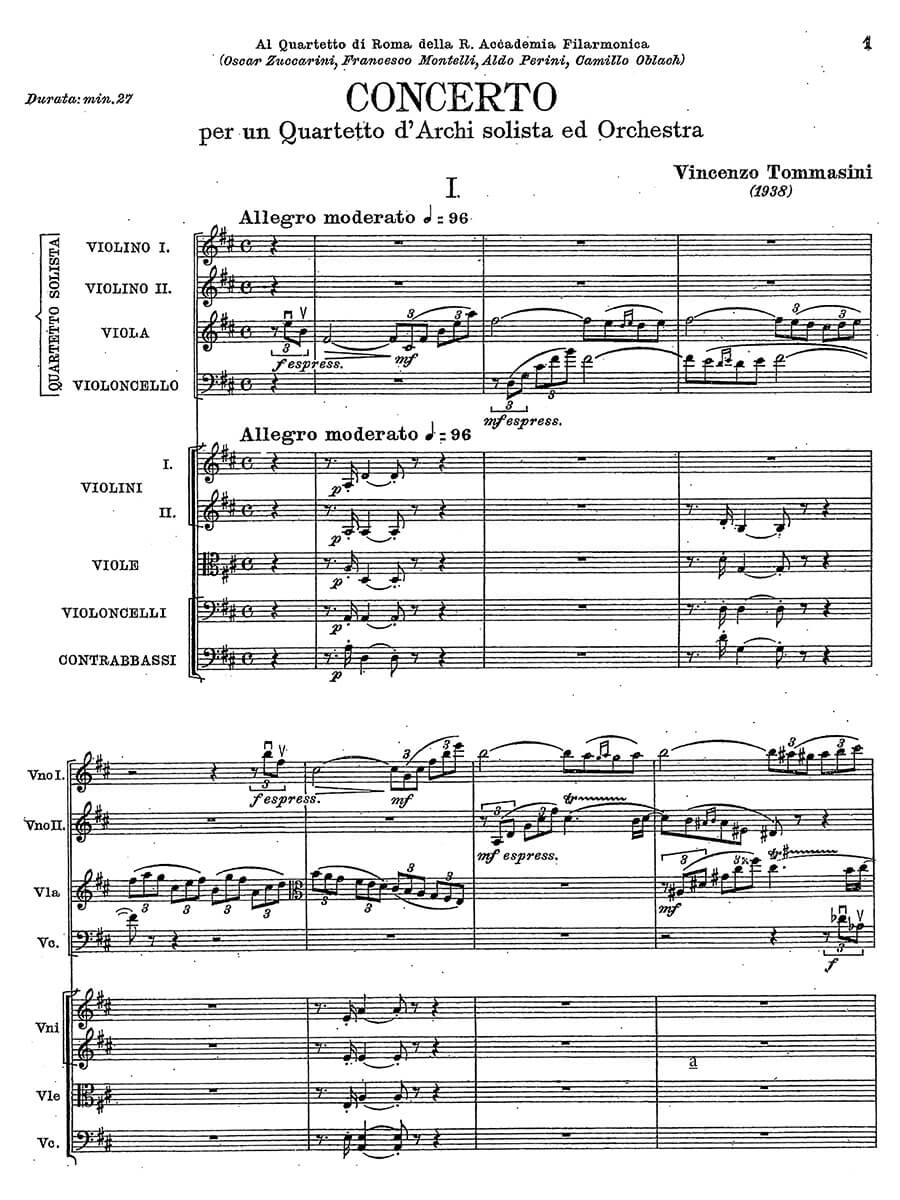Concerto per quartetto d’archi solista ed orchestra
Tommasini, Vincenzo
36,00 €
Vincenzo Tommasini – Concerto per quartetto d’archi solista ed orchestra (1938)
(b. Rome, 17 September 1878 – d. Rome, 23 December 1950)
Preface
Born at Rome on 17 September 1878, Vincenzo Tommasini was one of the leading figures in the revival of orchestral music in twentieth-century Italy. Alongside the better-known figures of Gian Francesco Malipiero, Alfredo Casella, and Ildebrando Pizzetti, Tommasini was an important figure in the so-called generazione dell’ottanta. He studied violin, piano, and composition under Stanislao Falchi at the Liceo (now the Accademia Nazionale) di Santa Cecilia at Rome, before spending a short period under the tutelage of Max Bruch at the Hochschule für Musik in Berlin.
Tommasini cultivated a great love of and interest in the modern French school: in 1907 he authored a ground-breaking article on the music of Claude Debussy, the first study of that composer to appear in the Italian language.1 The influence of Debussy and his followers can be seen throughout Tommasini’s oeuvre, starting with his String Quartet no.1 in F (1910/1912). In the following decade, Tommasini became loosely associated with Casella’s Società Italiana di Musica Moderna, although he appears to have taken little interest in the musical debates of the day and made little effort to promote his own compositions.
From the mid-1910s, Tommasini developed a profound interest in the music of the Italian past, leading to the creation of some of his most enduringly popular works. The suite Le donne di buon umore (1917), arrangements of five sonatas by Domenico Scarlatti, was commissioned by Sergei Diaghilev and performed to great acclaim by the Ballets Russes; it may have inspired Stravinsky’s Pulcinella, composed for the same company three years later. But Tommasini’s neoclassicism is most clearly seen in the series of concerti he composed during the following two decades, including those for violin (1935), string orchestra (1942), and cello (1943), and the duo concertante for piano (1948). Indeed, his artistic interests and musical output closely mirror those of his more famous contemporaries Casella and Ottorino Respighi, from the expressionism of Il carnevale di Venezia (1928) to the Gregorian inflections of Il beato regno (1921), the pastoral rhapsody Paesaggi toscani (1922) to the experimental dissonance of La tempesta (1941). …
Read full preface / Das ganze Vorwort lesen> HERE
| Partitur Nr. | |
|---|---|
| Edition | |
| Genre | |
| Format | |
| Druck | |
| Seiten |
